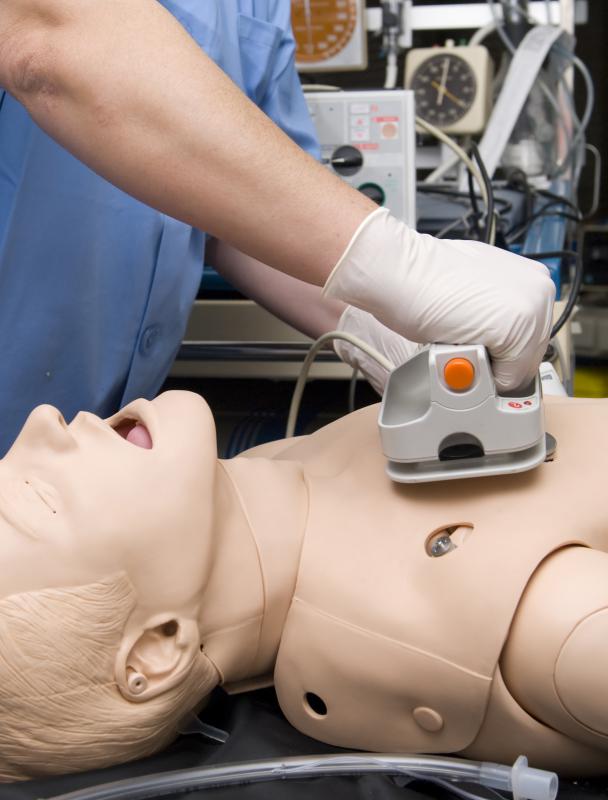At WiseGEEK, we're committed to delivering accurate, trustworthy information. Our expert-authored content is rigorously fact-checked and sourced from credible authorities. Discover how we uphold the highest standards in providing you with reliable knowledge.
What are the Different Types of AED Course?
An AED course is a training program intended to teach people how to use an automated external defibrillator, or AED. An AED is an electronic device that is able to automatically diagnose problems related to an irregular and uncontrolled heart rate, which can be life-threatening. AEDs are commonly placed in businesses and schools, so instruction in their use is often required in such institutions and is offered to anyone else who wants to learn. Some AED courses are offered for official certification while others are less-extensive and provide only the most basic knowledge needed to use an AED. An AED course is often offered as a part of a larger emergency responder course as well.
AEDs are often placed in several locations in schools or workplaces, usually in public hallways or by the offices of those with AED training. As such, many if not all of the people who work at such places are required to take an AED course. Requiring this ensures that, if an emergency heart issue comes up, someone nearby will likely be able to use the AED, possibly saving the afflicted individual's life. In some cases, one or two individuals are designated as the official emergency responders in the workplace. In such cases, only these individuals are generally required to take an AED course, but they are expected to keep their skills and knowledge of emergency response techniques up to date.

After taking an AED course, one is generally able to obtain some kind of certification indicating that he has taken the course and has been evaluated by professional AED instructors. Some self-directed AED courses without practical training are available online, but these do not offer certification without further evaluation by an instructor. An AED course usually must be taken on a regular basis, possibly every other year, for one to remain certified. Certification is generally required for healthcare professionals. Individuals designated as emergency responders may also be required by their businesses to keep their certifications up to date — if they fail to do so, they may lose their emergency responder status.

As an AED can only be used to treat a small range of possible medical emergencies, an AED course is usually offered as a part of a larger course in emergency response techniques. Such a course may offer training in AED use, cardiopulmonary resuscitation (CPR), response to shock, responses to objects lodged in a victim's throat, and methods to stop bleeding. In environments such as laboratories and in some industries, proper responses to poisons and burns may also be taught.
AS FEATURED ON:
AS FEATURED ON:












Discuss this Article
Post your comments